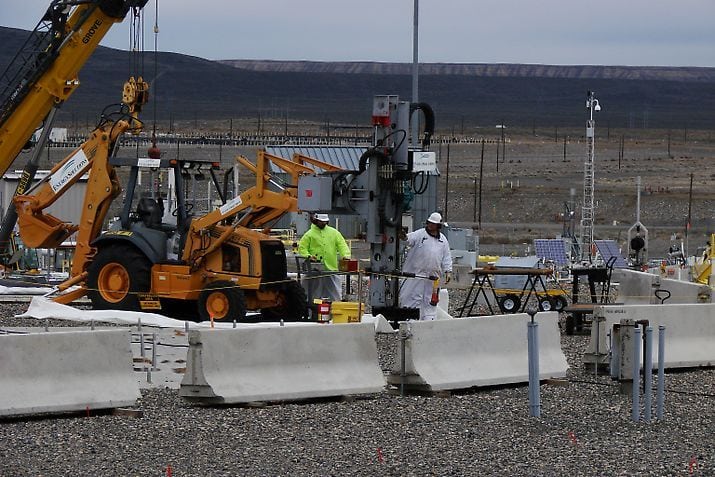
A long-awaited settlement agreement rolled out Monday by state and federal agencies says the Department of Energy’s Hanford Site in Washington state still intends to start turning low-level radioactive tank waste into glass starting next year, with high-level waste vitrification to follow in the 2030s.
DOE, the Washington state Department of Ecology (Ecology), and U.S. Environmental Protection Agency also said the direct-feed approach planned next year for low-level waste, will also be employed for immobilizing high-level waste in glass.
The agreement resulting from the so-called “holistic” negotiations, proposes a “ realistic and achievable path forward for Hanford’s tank waste mission,” said Brian Vance, DOE manager at the site said in a joint press release Monday from the agencies. There was no slippage in the current schedule for the Bechtel-built Waste Treatment and Immobilization Plant. The negotiations date back to 2019.
“This agreement on how to safely dispose of the 56 million gallons of tank waste at the Hanford site moves us in the right direction,” Sen. Maria Cantwell (D-Wash.) said in a press release. Cantwell promised to continue monitoring the remediation.
“For the first time since I began fighting for the cleanup of Hanford in 1986,” instead of DOE “proposing to add more waste to Hanford, USDOE is agreeing to remove waste from Hanford,” said Gerry Pollet, executive director and attorney for Heart of America Northwest, said in a press release. Pollet is also a member of the Washington legislature.
On the downside, Pollet went on to say the agreement fails to live up to existing obligations to address leaking tanks and the state “would give up on having enforceable deadlines” for emptying high-level tanks.
“We have said for years that alignment between DOE, its regulators, and key stakeholders will be critically important to the successful cleanup of the Hanford Site,” said David Reeploeg, the executive director of Hanford Communities, via email. “That alignment hasn’t always existed, so this announcement is a big step in the right direction.”
“Hot commissioning” of the Direct-Feed-Low-Activity-Waste Facilities should be done by Aug. 1, 2025, according to the agreement. Hot commissioning of high-level waste operations at the Waste Treatment and Immobilization Plant should occur by Dec. 31, 2033. Initial plant operations for the high-level waste facilities should occur by Dec. 31, 2036.
The document also says within 18 months of high-level waste commissioning, the parties are expected to finish negotiating some open issues, such as the timeline for closing all single-shell tank farms. Single shelled tanks have been prone to leaking.
A 60-day public comment period will begin on May 30, with regional public meetings in Washington and Oregon in July.
If everything pans out following public comment, eventually, U.S. District Judge Rosanna Malouf Peterson in the Eastern District of Washington will be asked to sign off on an amended consent decree between DOE and the state, according to the document. Milestones modifications would also be made to the Tri-Party Agreement between DOE, EPA and the state, according to the settlement.
DOE will also convene an independent expert committee on tank waste by March 2025.
The three agencies announced a conceptual agreement nearly a year ago. For years, the state and federal agencies have worked to update key parts of the Tri-Party Agreement that guides cleanup of the former plutonium production complex. Hanford has about 56 million gallons of radioactive and chemical water left over from making plutonium for nuclear weapons.
Submission of a state permit request for a larger-scale successor to the Tank Side Cesium Removal System for low-level waste should be filed by August 2026.
“The disposal of tank waste is a critical component of the complex, site-wide cleanup efforts at Hanford,” said EPA Region 10 Administrator Casey Sixkiller. “We encourage all impacted Tribes, community members, and other stakeholders to participate in the public review process.”